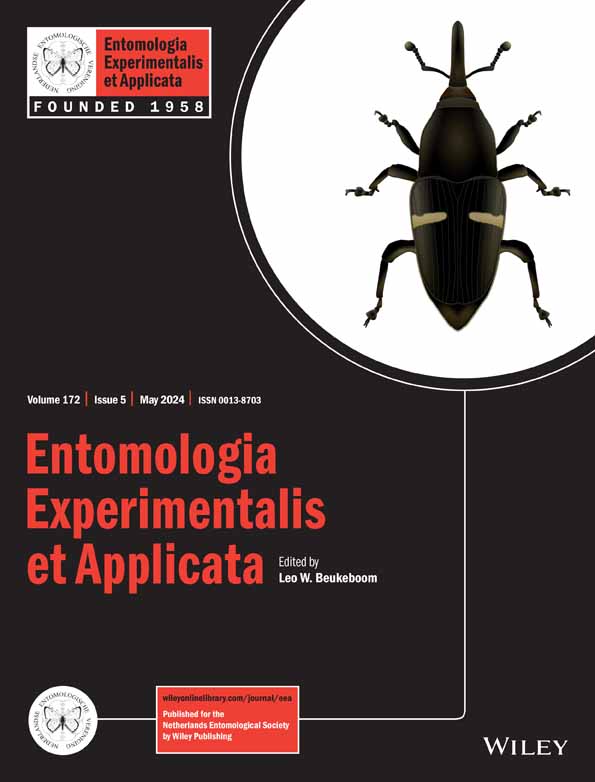Ver ítem
- xmlui.general.dspace_homeCentros Regionales y EEAsCentro Regional Mendoza - San JuanEEA San JuanArtículos científicosxmlui.ArtifactBrowser.ItemViewer.trail
- Inicio
- Centros Regionales y EEAs
- Centro Regional Mendoza - San Juan
- EEA San Juan
- Artículos científicos
- Ver ítem
Volatiles of essential oils and yeast derivatives influence mating behaviour of Anastrepha fraterculus males under field cage conditions
Resumen
The sterile insect technique (SIT) is used for the management of tephritid fruit fly pests. The South American fruit fly, Anastrepha fraterculus (Wiedemann) (Diptera: Tephritidae), is one potential pest to be targeted by means of SIT. The success of SIT depends, to a large extent, on the sexual performance of sterile males. Various approaches have been evaluated with the aim of improving their sexual performance. These include the exposure to
[ver mas...]
The sterile insect technique (SIT) is used for the management of tephritid fruit fly pests. The South American fruit fly, Anastrepha fraterculus (Wiedemann) (Diptera: Tephritidae), is one potential pest to be targeted by means of SIT. The success of SIT depends, to a large extent, on the sexual performance of sterile males. Various approaches have been evaluated with the aim of improving their sexual performance. These include the exposure to plant-derived compounds and/or the provision of protein sources in the adults' diet capable of stimulating male mating success. The present study aimed to determine whether exposure to volatiles of Citrus limon (L.) Burm. F. (Rutaceae) essential oil and limonene confers a mating advantage to A. fraterculus laboratory males fed two distinct dietary regimes when competing with wild males for wild females under field cage conditions. Dietary regimes were, one, with non-hydrolysed brewer's yeast and sugar (1:3 ratio), and the other with brewer's yeast hydrolysate enzymatic and sugar (1:12 ratio). The effect was evaluated in four variables associated with mating success: number of copulas obtained, latency to mate, copula duration, and copula location. Exposure to volatiles did not affect the number of matings achieved, irrespective of the diet given to the males. When laboratory males were fed with brewer's yeast hydrolysate, the effect of volatile exposure was shown in latency to mate, copula duration, and copula location. When the laboratory males were fed with non-hydrolysed brewer's yeast, the effect of volatile exposure was shown only in copula duration. Laboratory males fed brewer's yeast hydrolysate achieved the same number of matings as wild males, whereas laboratory males fed non-hydrolysed brewer's yeast had lower performance.
[Cerrar]

Autor
Ruiz, Maria Josefina;
Juárez, María Laura;
Jofré Barud, Flavia;
Goane, Lucía;
Valladares, Gabriela A.;
Bachmann, Guillermo Enrique;
Belliard, Silvina Ahnahi;
Segura, Diego Fernando;
Lopez, María Liza;
Vera, María Teresa;
Fuente
Entomologia Experimentalis et Applicata : 1-12. (First published: 25 March 2024)
Fecha
2024-03-25
Editorial
Wiley
ISSN
1570-7458
0013-8703
0013-8703
Formato
pdf
Tipo de documento
artículo
Palabras Claves
Derechos de acceso
Restringido
 Excepto donde se diga explicitamente, este item se publica bajo la siguiente descripción: Creative Commons Attribution-NonCommercial-ShareAlike 2.5 Unported (CC BY-NC-SA 2.5)
Excepto donde se diga explicitamente, este item se publica bajo la siguiente descripción: Creative Commons Attribution-NonCommercial-ShareAlike 2.5 Unported (CC BY-NC-SA 2.5)


